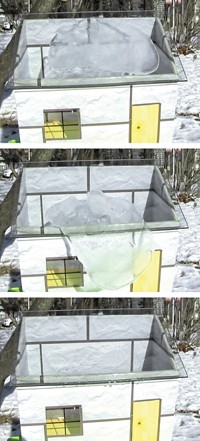Advertisement
Grab your lab coat. Let's get started
Welcome!
Welcome!
Create an account below to get 6 C&EN articles per month, receive newsletters and more - all free.
It seems this is your first time logging in online. Please enter the following information to continue.
As an ACS member you automatically get access to this site. All we need is few more details to create your reading experience.
Not you? Sign in with a different account.
Not you? Sign in with a different account.
ERROR 1
ERROR 1
ERROR 2
ERROR 2
ERROR 2
ERROR 2
ERROR 2
Password and Confirm password must match.
If you have an ACS member number, please enter it here so we can link this account to your membership. (optional)
ERROR 2
ACS values your privacy. By submitting your information, you are gaining access to C&EN and subscribing to our weekly newsletter. We use the information you provide to make your reading experience better, and we will never sell your data to third party members.
Materials
Durable, Stretchable Coating Repels Water
Materials: A superhydrophobic coating built on a flexible, nanostructured hydrogel can make several different materials water repellent
by Melissae Fellet
July 17, 2014

A new superhydrophobic coating maintains its water repellency even after thousands of cycles of stretching (Nano Lett. 2014, DOI: 10.1021/nl5019782). The coating works on a variety of surfaces and could be used to turn sponges and screens into materials to clean up oil spills, the researchers say.
Superhydrophobic coatings consist of micro- and nanostructures on a material’s surface that force water to form droplets that tumble off. There are a variety of ways to make these coatings. Chemical vapor deposition can directly pattern the structures onto surfaces, but it’s too expensive to do on a large scale. A less expensive method involves coating a surface with nanowires that self-assemble into nanoscale patterns, but such coatings may slough off because they’re not fully bonded with the surface.
Guihua Yu of the University of Texas, Austin, and his colleagues wanted to develop a superhydrophobic material that could be easily fabricated on a variety of surfaces. They created a hydrogel-based material that forms micro- and nanostructures as it sets. To prepare the coating, the researchers spread a solution of aniline, phytic acid, and teraethoxysilane onto their surface of choice: wood, fabric, metal, glass, or cement. After six to eight hours of polymerization, the material forms a porous network of polyaniline fibers cross-linked by phytic acid and covered in a nanotextured silica crust. The researchers then coat the hydrogel with trichloro(octadecyl)silane to make it superhydrophobic.
The aniline mixture could be applied with dip-coating, a process that would allow inexpensive, large-scale manufacture of these water-repellent coatings, Yu says. The naturally flexible polyaniline fibers also make the final coating stretchable. The researchers found that a coated piece of poly(dimethylsiloxane) could be stretched to twice its length 5,000 times without losing its superhydrophobic properties.
The ability to stretch over thousands of cycles is a unique feature of this coating, says Arun K. Kota of Colorado State University, who was not involved with the work. This characteristic may make it useful for producing oil-absorbing sponges, he says.
To test this potential, Yu and colleagues used their process to coat a commercially available sponge. Then they soaked the sponge in oil, gently mixed with saltwater, to simulate an oil spill in the ocean. The sponge absorbed up to 40 times its weight in oil and could be squeezed out and reused 50 times without losing absorption.






Join the conversation
Contact the reporter
Submit a Letter to the Editor for publication
Engage with us on Twitter